but with survival stats, WELCOME, you are now in the Big Leagues. If you do not, bear up.
My B/B training lasted for six hours, during 2002, in the New York Botanical Garden as a requirement for the certificate, under the supervision of an expert, Mike Ruggiero.
Ball and Burlap consists on digging around the trunk of a tree to the necessary depth to find surrounding roots supporting the patient to be removed/relocated without harm.
You need a taper mouth spade, trowel and a hand pruner. I will not get into much detail except that in the tropics, if you know what you are doing, it does not matter if the root ball brakes or not. That is why no burlap was involved here. However, let the record show that I am writing about Guiacum officinale and Calliandra haematocephala even if the theory is correct for any species. Be aware that many trees will just pass away, it is not in their spirit to be removed. Research if in doubt.
Guaicum oficcinale
This beautiful tree, was a gift from a former co-worker at four inches tall, seven years ago. It is
about six feet and a four inches diameter. It was planted in the south side, not foo far from the
wall.
Lets get to the digging. Since the space was tight, I started digging with a trowel, not a problem
in mostly sand soils. When I reached eight inches, I noticed a couple of roots the as thick as my
index finger. I cut carefully and kept digging, finding only some adventitious roots. I moved the trunk and gave away some. Proceeded with the spade to go around, deeper as in an oval to make sure no other roots were left. Once I was certain there was nothing left I pulled out the patient.
It was placed immediately in a three feet tall, two feet diameter plastic pot with my secret soil and compost formula. One third of the pot was filled. When I placed the tree it was too low. I added
some more soil, making sure it did not go over the previous depth. Watered it and put a thick string around the canopy to avoid too much movement as a tutor would.
Calliandra haemathocephala
about six feet and a four inches diameter. It was planted in the south side, not foo far from the
wall.
Lets get to the digging. Since the space was tight, I started digging with a trowel, not a problem
in mostly sand soils. When I reached eight inches, I noticed a couple of roots the as thick as my
index finger. I cut carefully and kept digging, finding only some adventitious roots. I moved the trunk and gave away some. Proceeded with the spade to go around, deeper as in an oval to make sure no other roots were left. Once I was certain there was nothing left I pulled out the patient.
It was placed immediately in a three feet tall, two feet diameter plastic pot with my secret soil and compost formula. One third of the pot was filled. When I placed the tree it was too low. I added
some more soil, making sure it did not go over the previous depth. Watered it and put a thick string around the canopy to avoid too much movement as a tutor would.
Calliandra haemathocephala
You probably saw the picture here and read some anecdotes of insects and hummingbirds previously about this tree. I brought it from the Luis Munhoz Marin Foundation. I was probably eight inches tall then, now is six feet tall, but not as wide as the Guayacan. Like the first, it spent most of its life in pots. Both have been in the ground for the last two years.
Unlike the first, white flies and some pyramid shaped insects have been a problem, but not a headache. The roots of this tree were deeper in the ground, thin and spread evenly. It was easier to dig around, there is much more room than in the first case.
The Calliandra was dug and placed eight feet from the original spot to make room for the Guaicum. The hole was about twice the size of the roots, in diameter. Remember the depth
has to be the same or higher, otherwise it may pass away by drowning. I put some of my compost/soil at the bottom, and filling the rest with the sandy ground. A string was tied around
the trunk (not too tight) for support and around the canopy for two days.
Why now? May wonder the inquisitive reader. If you live in the tropics, the perfect time to do Ball/Burlap is after it has rained for a day or two, if in sandy soil. The ball has less chance to brake, the digging is easier. In clay is another story. However, the most important reason, is that much less stress will be inflicted in the patient.
If you have transplanted anything in your gardening life, you may have noticed that most plants look as if in agony after the trauma. With these trees was no different. The Guaicum looks like crap, but not the Calliandra. Their leaves have turned yellowish, but look healthy and recovering. The second is showing flower buds in their in their infancy, a sign of sure recovery.
Make sure you water profusely after planting. Good luck in your projects. If your trees are
Unlike the first, white flies and some pyramid shaped insects have been a problem, but not a headache. The roots of this tree were deeper in the ground, thin and spread evenly. It was easier to dig around, there is much more room than in the first case.
The Calliandra was dug and placed eight feet from the original spot to make room for the Guaicum. The hole was about twice the size of the roots, in diameter. Remember the depth
has to be the same or higher, otherwise it may pass away by drowning. I put some of my compost/soil at the bottom, and filling the rest with the sandy ground. A string was tied around
the trunk (not too tight) for support and around the canopy for two days.
Why now? May wonder the inquisitive reader. If you live in the tropics, the perfect time to do Ball/Burlap is after it has rained for a day or two, if in sandy soil. The ball has less chance to brake, the digging is easier. In clay is another story. However, the most important reason, is that much less stress will be inflicted in the patient.
If you have transplanted anything in your gardening life, you may have noticed that most plants look as if in agony after the trauma. With these trees was no different. The Guaicum looks like crap, but not the Calliandra. Their leaves have turned yellowish, but look healthy and recovering. The second is showing flower buds in their in their infancy, a sign of sure recovery.
Make sure you water profusely after planting. Good luck in your projects. If your trees are
taller than those here, get some help, it will make it easier for you and the tree. Time to go.
BONUS FOR THE FAITHFUL
ANYTHING
YOU
NEED TO KNOW
about the subject
PERHAPS TOO
MUCH
in Youtube.com
under
Ball and Burlap
BONUS FOR THE FAITHFUL
ANYTHING
YOU
NEED TO KNOW
about the subject
PERHAPS TOO
MUCH
in Youtube.com
under
Ball and Burlap


















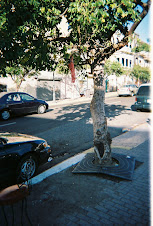-25.jpg)
-24.jpg)
























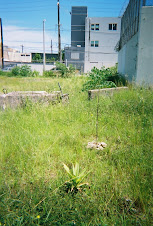




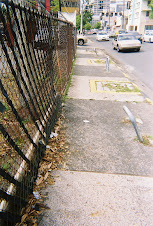
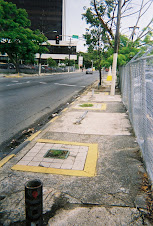
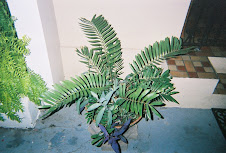




-22.jpg)
-25.jpg)
-24.jpg)






-16.jpg)
-13.jpg)
-08.jpg)

















































1 comentario:
Same here
Publicar un comentario